Accessible world for color-blindness
People with color-blindness can face small difficulties that we would never see, and I believe design could give them a chance to experience what we experience everyday.
Adding a small device in color-blinded grocery shopping experience could reduce choosing the best quality of produce food with independence. Asking another person's help while grocery shopping is no more necessary.
My Approach
I love grocery shopping especially at the Whole Foods with my friends during the semester. When I was a sophomore at RISD, I had a chance to pick a user that myself does not belong as a one of the user group. I picked a user group with color-blindness, but I never knew what they usually experience everyday. As I researched and interviewed users, I figured the grocery shopping that I enjoy is not the same for my user group. Wripeness of produce food that we can easily determine was a huge difficulty for them, therefore, I decided to approach to enhancing the experience at the grocery store for color deficient users.
Design Research
What is Color-blindness?
In the United States, about 8% of men and 0.5% of women are experiencing color-blindness including 3 different types. Although you seem the number seems small and minority of people will be our users, but if you take a closer look around you, you will easily find one. Color-blindness is mostly inherited, and inables to distinguish the shades of red-green, blue-yellow, and complete color. There is no cure for inherited color deficiency.
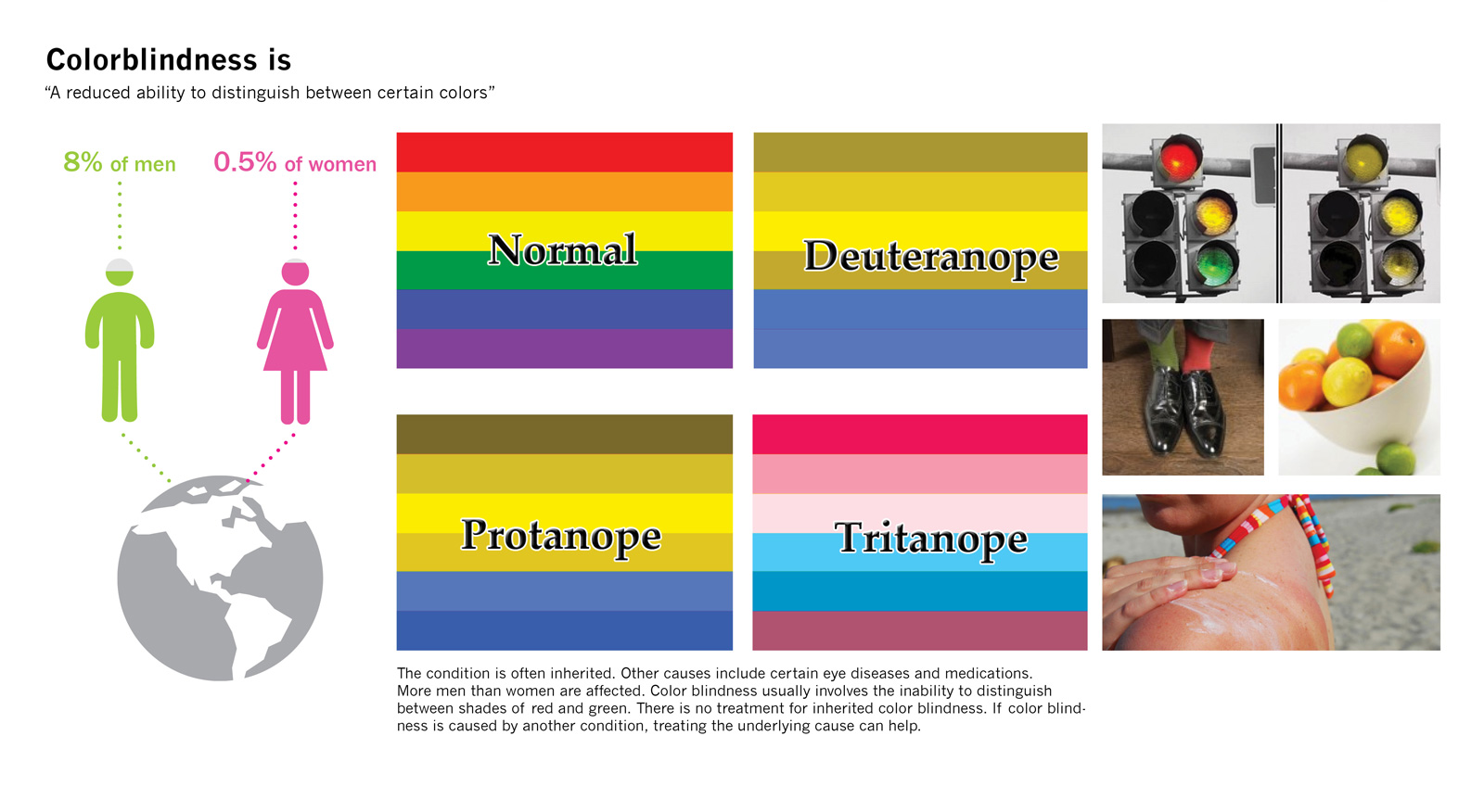
Design Research
Color-Deficient User Interviews & Insights
As I interviewed the color-deficient users, the main insight was that the world without colorfulness does not seem to matter to them that much aesthetically. A few number of people mentioned that they have no problem with living in the less color world - it's just small difficulties they find in their everyday life, especially the grocery shopping. For instance, it is hard to determine the wripness of produce, and how steak it cooked. Additionally, they do not prefer asking for help at the store, want to be independent.

Design Strategy
Landscape Research
From the landscape research, there was a developing glasses that help users to see the color they are deficient; however, it was very overpriced, and my insight on the user was that the pain-point was not the colorfulness, but more towards to the small difficulties. Thus, I wanted to design a device that is affordable. *The landscape research includes color capture devices.
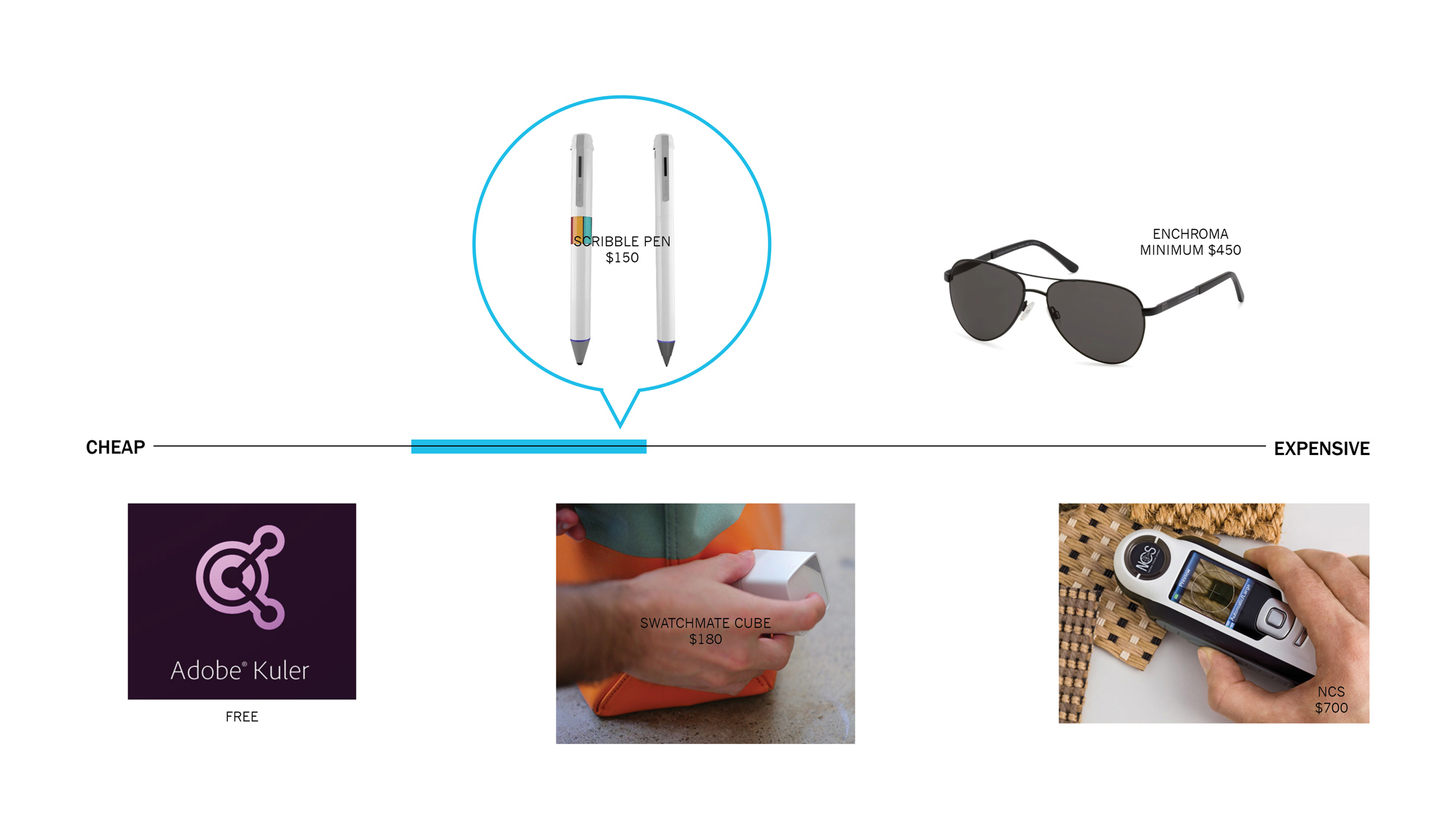

Design Research
Mood Board
Most of form aesthetics inspired from View-Master, which is the origin of virtual reality product. The ergonomics such as hand grips and overall size were inspired from regular cameras.
Design
Ideation
I explored from kitchenwares to color-capturing devices. Since I did not want to limit myself thinking about just one type of product, sketched various products that comes to my mind. At the end, the camera type of form appealed for its main use at the certain environment for the solution of the problem.
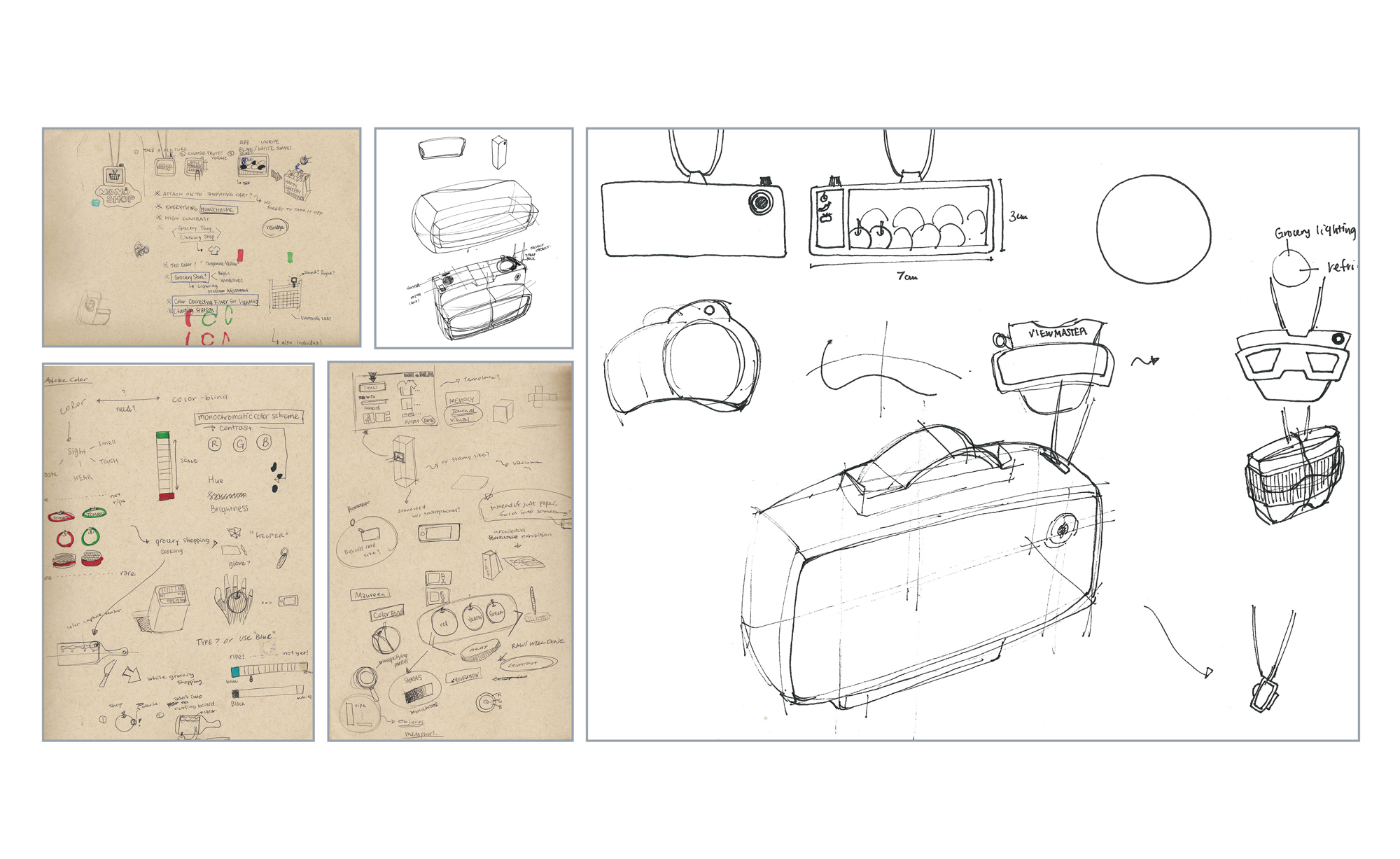
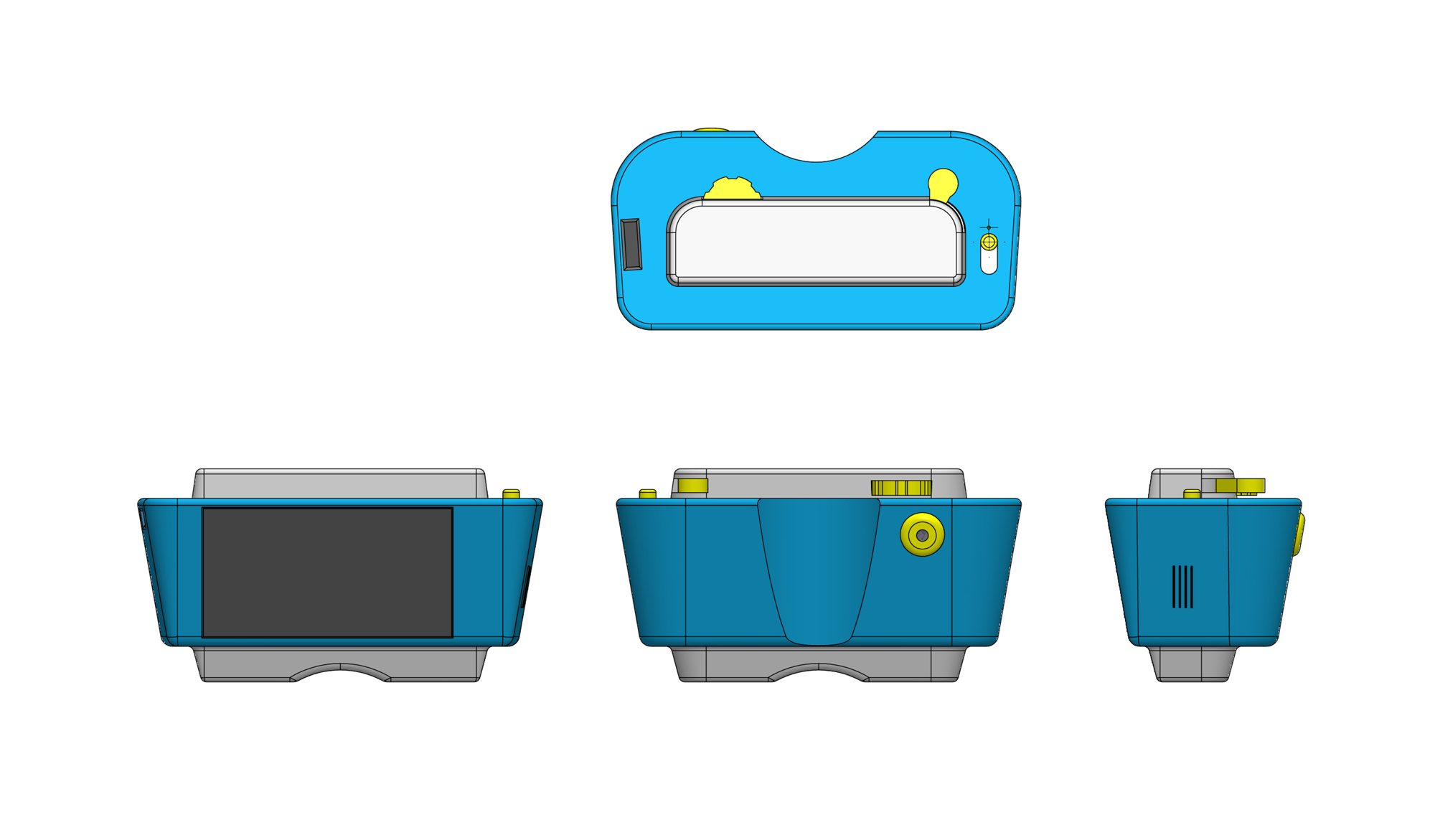
Final Design
User Scenario
As the user approaches to the produce area, he/she turns on the grabcery, and search for the type of produce they want to analyze. After picking the type, focus on the area and simply click the shutter button. In a second, the device will gather the color-database from the accuracy comes from the calculation of grocery store lighting and tell you which produce you might want to purchase.
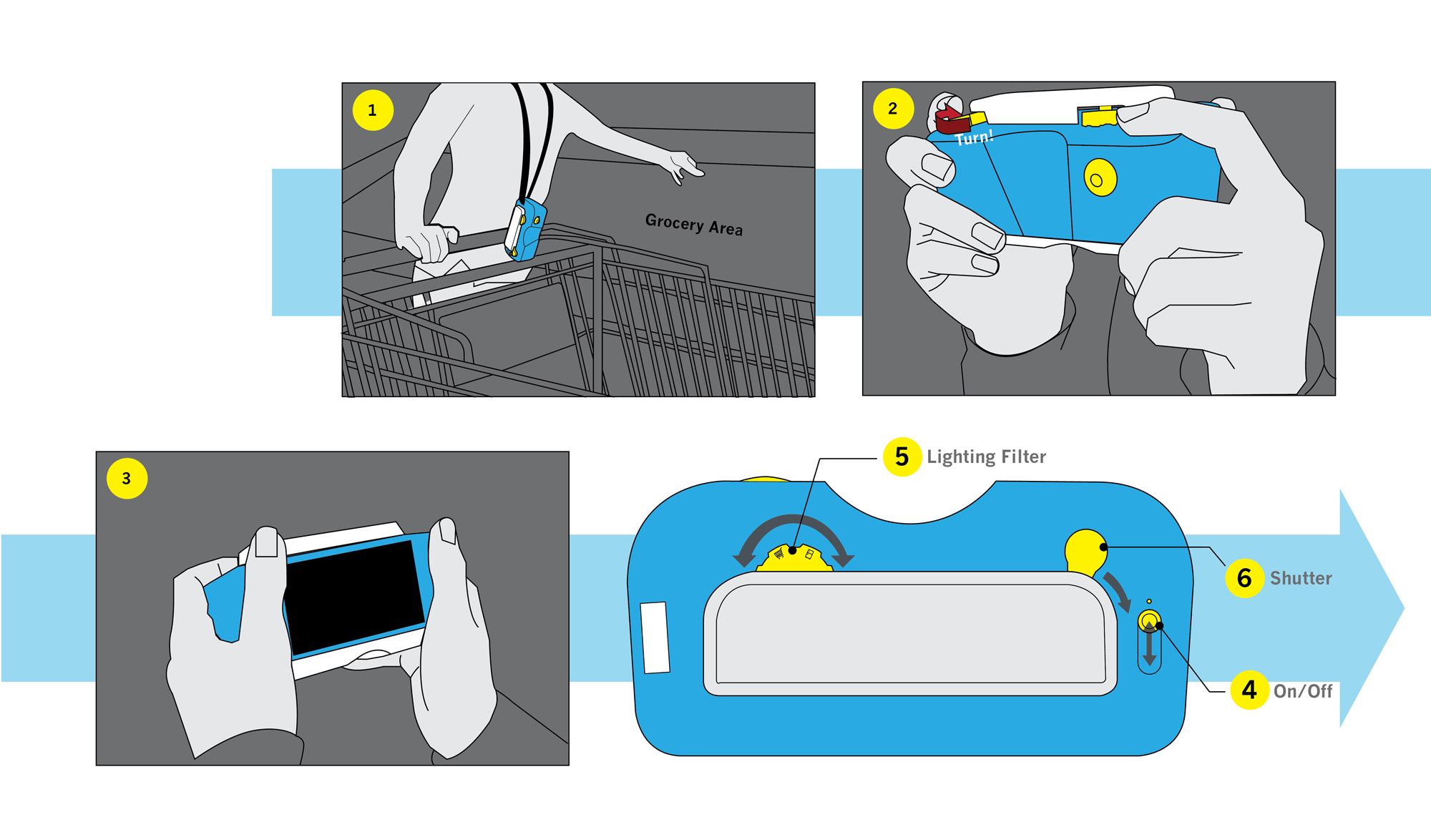
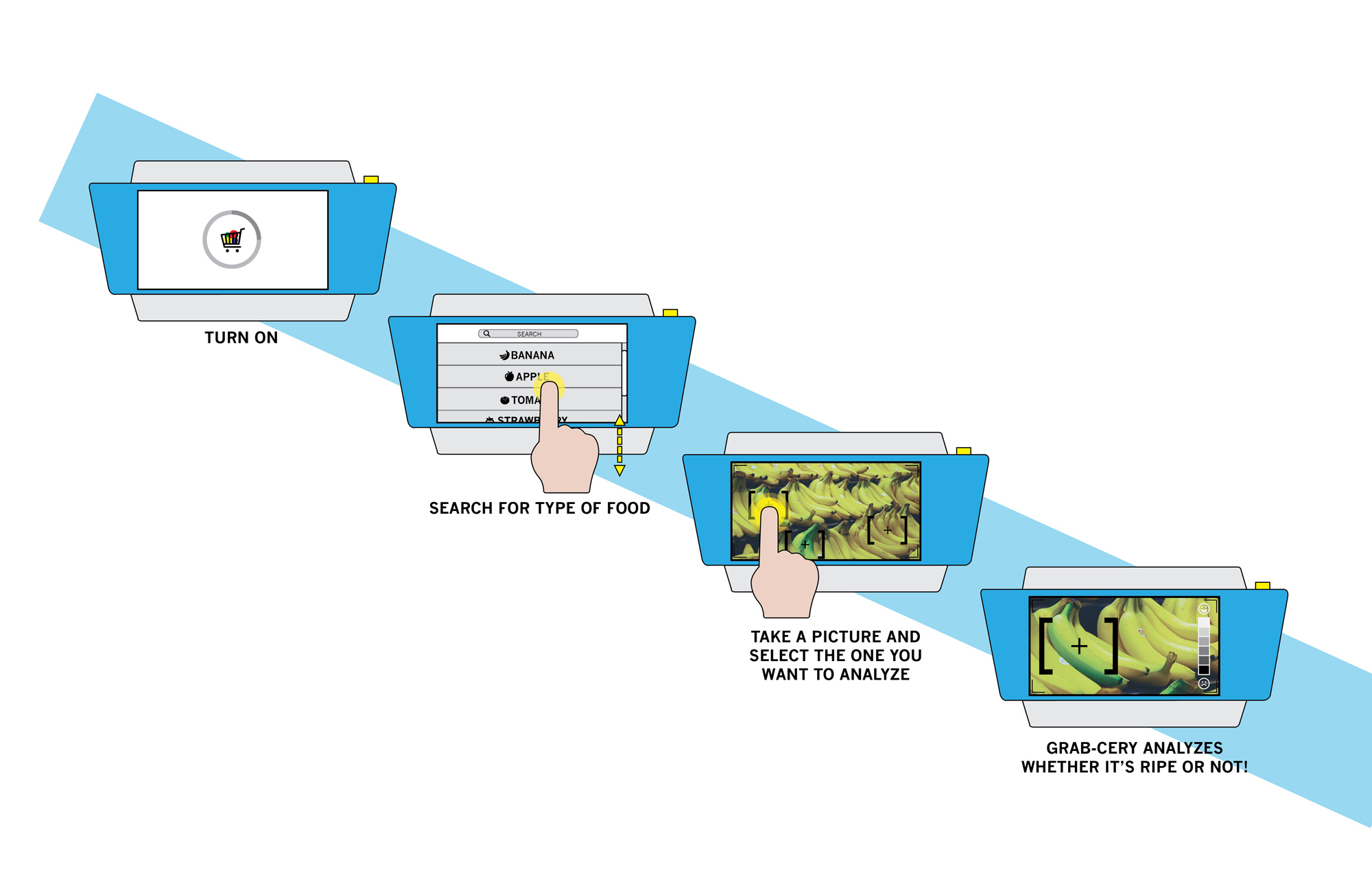
Final Design
Final Rendering & Prototype

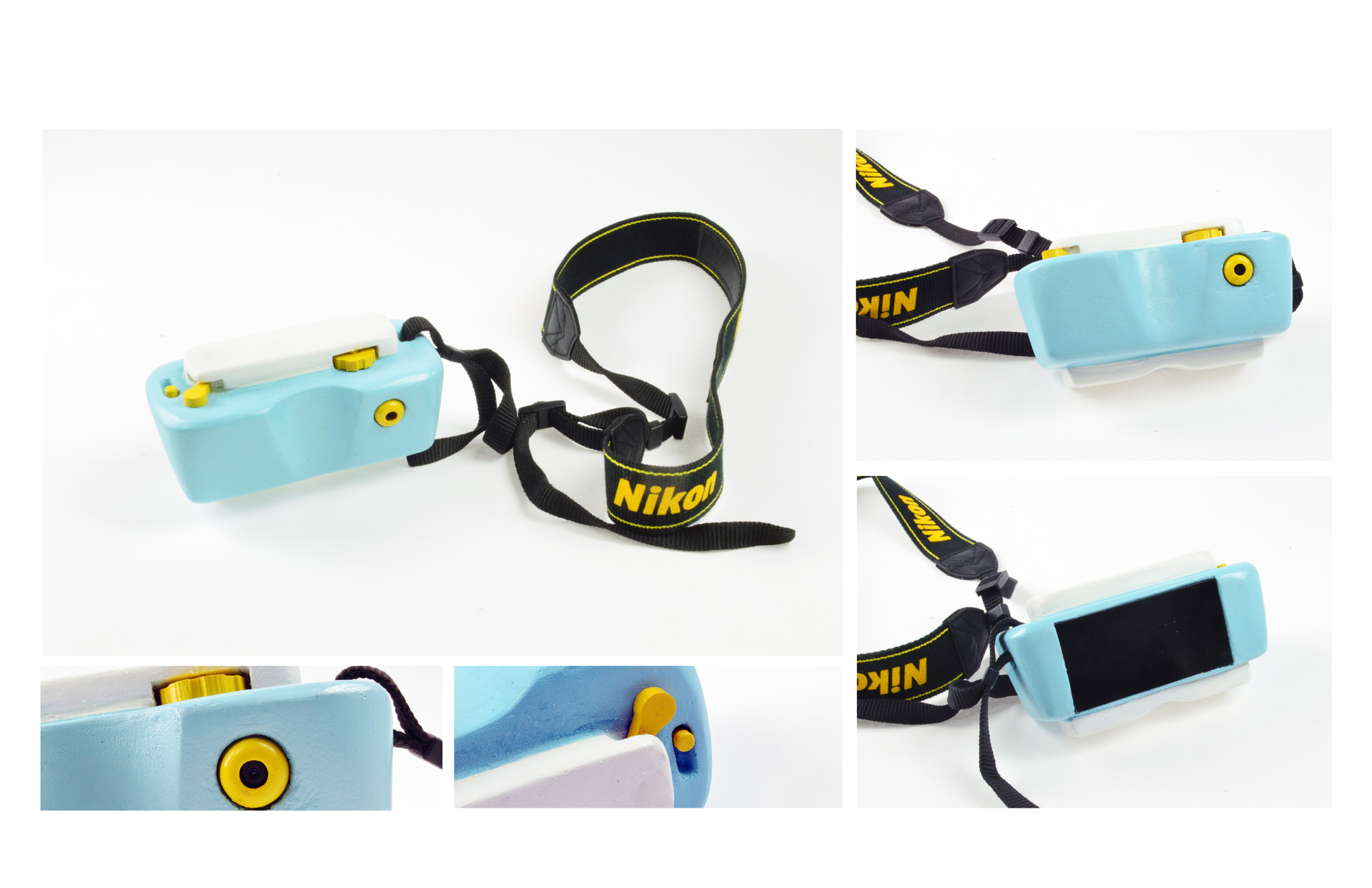
Final Design
Modeling Process
The model was made of yellow-foam and 3D printed buttons.


Extra Fun Fact
+ What would it look like to users?
Here is a fun fact about this final product, which is an actual color aesthetics to color-deficient users. It may seem to be an unusual color combination as a product, but you might get used to it.
